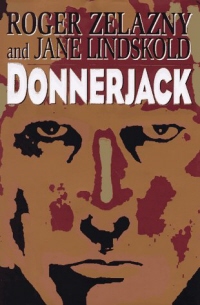 Cover illustration from the first edition | |
| Author | Roger Zelazny and Jane Lindskold |
|---|---|
| Cover artist | Amy Halperin |
| Language | English |
| Genre | Science fiction novel |
| Publisher | Avon |
Publication date | August 1997 |
| Publication place | United States |
| Media type | Print (Hardback) |
| Pages | 503 |
| ISBN | 0-380-97326-X |
| OCLC | 35849167 |
| 813/.54 21 | |
| LC Class | PS3576.E43 D66 1997 |
Donnerjack is a science fiction novel begun by American author Roger Zelazny and completed after his death by his companion Jane Lindskold. It was published in 1997. [1]
Contents
The original title of the book was Donnerjack, of Virtú. Initially, Zelazny intended it to begin an ambitious trilogy, with the two sequels tentatively titled The Gods of Virtú and Virtú, Virtú. Zelazny completed a few hundred pages of the first novel and left detailed notes for the remainder, which Lindskold completed, attempting to emulate his writing style. [2] The novel's description of the virtual world of Virtú has been seen as prefiguring the Internet. [3]